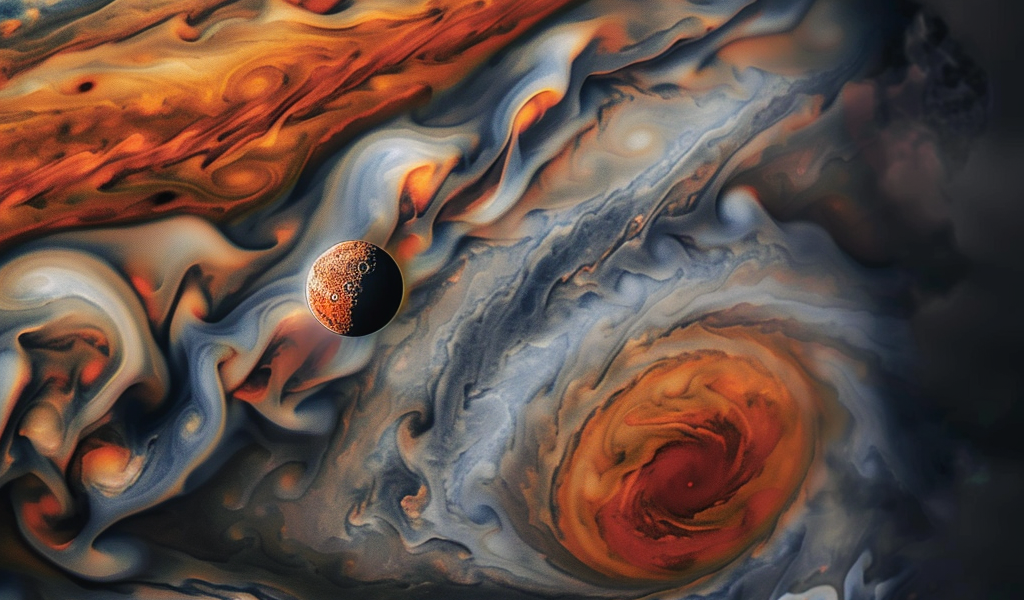NASA’s Juno Spacecraft recently made an intriguing discovery during its 59th close flyby of Jupiter – the mysterious fifth moon known as Amalthea. While Jupiter is well-known for its four Galilean satellites, Amalthea, discovered in 1892, has long remained a lesser-known celestial body.
During the close flyby, Juno captured remarkable images of Amalthea as it transited Jupiter’s Great Red Spot, providing researchers with a rare glimpse of this small but fascinating natural satellite. The moon appeared as a tiny dot against the backdrop of Jupiter’s cloud bands, showcasing its unique potato-like shape.
According to NASA, Amalthea lacks the mass to form a perfect sphere and orbits Jupiter inside Io’s orbit, completing one orbit in 0.498 Earth days. It is also noted as the reddest object in the solar system, adding to its enigmatic nature.
Scientists have long been puzzled by Amalthea’s ability to emit more heat than it receives from the Sun. Various theories have been proposed, including the idea that the moon may receive heat from Jupiter both directly and indirectly. Additionally, internal tidal pressures within Amalthea, caused by Jupiter’s gravitational pull, could also contribute to the generation of heat.
Despite its unique characteristics, Amalthea is often overshadowed in scientific discussions by Jupiter’s more prominent moons. However, its recent sighting by Juno has reignited interest in this mysterious celestial body, prompting further research and exploration into its intriguing properties.





